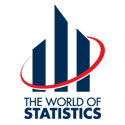Washington Statistical Society Seminars 1995
Topic: Using Mixed-Effects Modelling to Aid the Sample Design Process
- Speakers: David Judkins, Westat, Inc., and Donald Malec, NCHS
- Chair: Julia L. Bienias, Bureau of the Census
- Sponsor: Methodology Section
- Date/Time: Wednesday, December 6, 1995, 12:30-1:30
- Place: BLS Cognitive Lab, Postal Square Building, Room 2990, 2 Massachusetts Avenue, NE, Washington, DC (Red Line -- Union Station). Enter at Massachusetts Avenue and North Capitol Street.
The current National Home and Hospice Care Survey (NHHCS) is a three-stage stratified design with additional implicit strata and a fixed sample size that produces varying sample weights. In order to evaluate new designs under consideration for the next fielding of the NHHCS, formulas for both design-based variances and design-based variance components are needed. In complex designs, such as the NHHCS, simplifying population assumptions are usually made so that the variance formulas can be evaluated. As an alternative, we model the population using data from the current survey. We then obtain exact population variances (and variance components) based on a population predicted from the model. A generalized linear mixed-model is employed to aid in the prediction and to account for design variables. Gibbs sampling techniques are used to produce properly predicted populations and to account for uncertainty in the model parameters. Results covering the modelling and a comparison of a two- versus three-stage sample design will be presented. Return to top
Washington Statistical Society
President's Invited Session
December 7, 1995
BLS Cognitive Lab Conference Room
1:00 - 2:30 p.m.
- Title: "The Federal Committee on Statistical Methodology (FCSM): Responding to the Needs of the Federal Statistical Community, 1975 to the Future"
- Chair: Ron Fecso, President, Washington Statistical Society
- Organizer: M. Denice McCormick Myers, Secretary, FCSM
The objectives are to show the Federal Committee on Statistical Methodology (FCSM) is a fundamental part of the Federal Statistical System; its responsiveness to its clients: the Federal Statistical Agencies; and its interactions with academic and professional arenas. The history and evolution of the committee, selected contributions, and future needs of the statistical community will be discussed.
President's Invited Session Topics Presenter Committee Origins and Function Maria Gonzalez Office of Management and Budget FCSM Role in the Federal Statistical Monroe Sirken System National Center for Health Statistics Partnership with Academia Robert Groves Joint Program in Survey Methodology Universities of Michigan and Maryland The Professional Profile of Federal Stephen Fienberg Committee on Statistical Methodology Carnegie Mellon University Meeting Future Needs Norman Bradburn National Opinion Research CenterFor more information contact M. Denice McCormick Myers by phone at 202-690-0922, or by email at DMMYERS@AG.GOV. Return to top
Topic: Optimal Experiment Design for Diagnosis of Complex Systems
- Speaker: Payman Sadegh, The Institute of Mathematical Modeling, The Technical University of Denmark
- Chair: Paul Zador
- Sponsors: Physical Science & Engineering Section
- Date/Time: Monday, December 11, 1995, 12:30 - 2:30 p.m.
- Location: BLS Cognitive Lab, Postal Square Building, Room 2990, 2 Massachusetts Avenue, NE, Washington, DC (Red Line -- Union Station). Enter at Massachusetts Avenue and North Capitol Street.
Appropriately designed experiments have a major impact on the inference on a system based on data from the experiments. Identical to other optimization problems, experiment design requires an optimality criterion and an optimization tool. The criterion measuring the informational value of the data is normally problem dependent. In connection with the optimization part, we focus on the generic problem of experiment design for systems of such complexity that it is impossible or difficult to obtain a model relating the design variables to the criterion. Hence, optimization tools that solely rely on data are of major interest. Such situation arises often in problems such as test design in medicine, developing marketing strategies for a product in a business setting, etc. In the present work, we focus on the problem of locating sensors on a system for detection and diagnosis. This is a problem of generic interest in a variety of applications, e.g. radar usage, structural analysis, machine diagnostics, etc. Our objective is to minimize the probability of making wrong decisions about the occurence or diagnosis of a failure (event). We present a solution based on simultaneous perturbation stochastic approximation (SPSA) requiring only experimental measurements on the system for given types of events. Among stochastic approximation variants, SPSA with its highly efficient gradient estimation is an especially attractive alternative, from the point of view of reducing the number of costly experimental measurements on the system. Finally, sensor location for bridge monitoring problems is discussed as an important application of the methodology. Return to top
Topic: Parameter Estimation in Cox Proportional Hazards Model with Covariate Measurement Errors
- Speaker: Fanhui Kong, University of Maryland Baltimore County
- Chair: Sally Hunsberger, National Heart, Lung, and Blood Institute
- Date/Time: Wedneday, December 13, 1995 2:00-4:00 p.m.
- Location: Rockledge II, 9th floor conference room 1A Take Old Georgetown to Democracy Boulevard. Turn right onto Rockledge Drive. 6701 Rockledge Drive.
- Sponsor: Public Health and Biostatistics Sections
In Cox's proportional hazards model, if the covariates are measured with error, the maximum partial likelihood estimate (MPLE) becomes asymptotically biased. To reduce the bias, Prentice (1982) proposed a modified partial likelihood function by replacing the hazard functions in Cox's partial likelihood by their expectations. Such a partial likelihood function depends on the unknown parameters as well as the unspecified baseline hazard function therefore the induced MPLE is hard to find. A lot of efforts have been made toward solving the induced likelihood equation since Prentice (1982).
In this work, we show that contradicting to what people have expected, Prentice's induced MPLE in fact does not reduce the bias. Instead a better way to estimate the parameter is to find the bias of the naive MPLE and deduct it from the naive MPLE. This turns out to be quite effective and an adjusted MPLE is derived whose first order bias is zero. Survival functions can also be estimated. The formulas are demonstrated by the Primary Biliary Cirrhosis Data. Return to top
Topic: The Commerce Department-Wide Customer Satisfaction Survey: From Start to Finish
- Speakers: Tracy R. Wellens, Bureau of the Census, and Frank A. Vitrano, Bureau of the Census
- Discussant: Len Covello, Farm Services Agency, USDA
- Chair: Linda Atkinson, Economic Research Service
- Date/Time: Monday, December 18, 1995, 12:30 - 2:00 p.m.
- Location: BLS Cognitive Lab, Postal Square Building, Room 2990, 2 Massachusetts Avenue, NE, Washington, DC (Red Line -- Union Station). Enter at Massachusetts Avenue and North Capitol Street.
- Sponsor: Economics Section
In order for a government agency to provide the highest quality of customer service, it is first necessary to know the needs and expectations of the customer. Once this is known, action can be taken to better meet these needs and expectations. The development of an appropriate survey instrument and data collection methodology form the foundation of this dialogue between the agency and the customer. This paper will outline issues related to the development and implementation of a "generic" customer satisfaction survey which was used to assess the satisfaction of customers from 14 agencies (consisting of 20 operating units) within the Department of Commerce. These agencies offer diverse products and services, therefore, the task of developing one instrument for surveying satisfaction across these agencies was challenging. Moreover, this questionnaire was designed to obtain both agency- specific and departmental comparison information which led to additional complexities. Several problems which were encountered when developing a frame of customers and how these problems were addressed will also be discussed. The aim of this paper is to highlight survey results and to discuss issues related to making comparisons among these distinct agencies. In addition, lessons learned from the process and suggestions for research will be explored. Return to top
Seminar Archives
| 2025 | 2024 | 2023 | ||
| 2022 | 2021 | 2020 | 2019 | |
| 2018 | 2017 | 2016 | 2015 | |
| 2014 | 2013 | 2012 | 2011 | |
| 2010 | 2009 | 2008 | 2007 | |
| 2006 | 2005 | 2004 | 2003 | |
| 2002 | 2001 | 2000 | 1999 | |
| 1998 | 1997 | 1996 | 1995 | |






